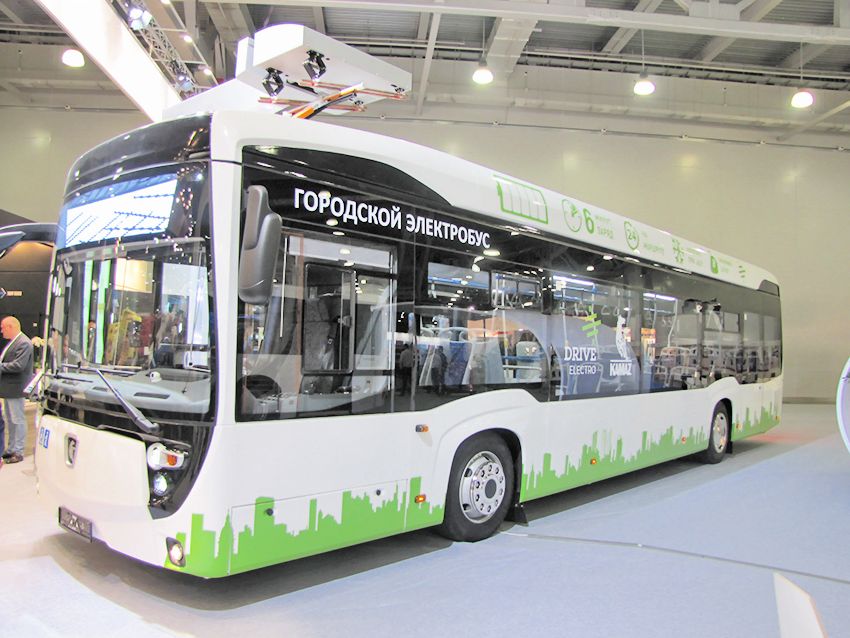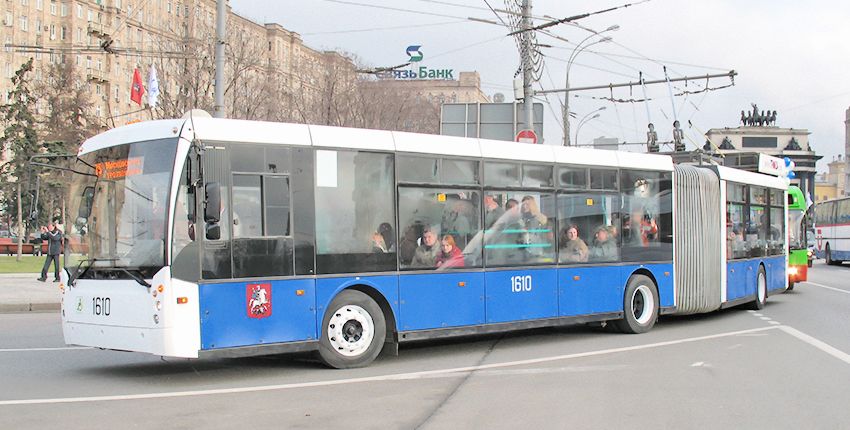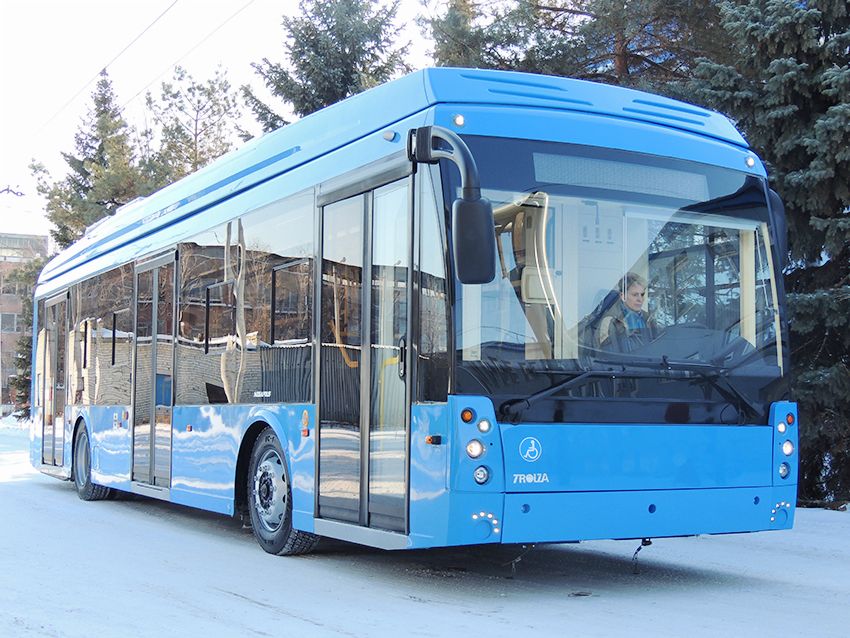The buses will travel to Moscow on September 3

15 August 2018
The first autumn month of operation of the Moscow buses will be free for passengers
According to the announcement on the website of the Mayor of Moscow Sergey Sobyanin: "first the buses should leave on city routes on 3 September. As when starting ISC, the first month of use of them will be free. By 2020 Moscow will buy 900 buses, and in a year or even stop to take diesel buses". In July, the International expert Council on transport issues, the head of the Department of transport of Moscow Maxim Liksutov said that the new vehicles will run on some trolleybus routes, and by 2030, the capital will get rid of diesel buses. Contracts for the supply of the first 200 electric buses have been concluded with enterprises of the KAMAZ (model 6282), the main shareholder of which is the holding company rostec, and the Model (model 6484 – on the splash screen) within the GAZ Group of Oleg Deripaska.

The buses KAMAZ-6282 running a tech Polupanova was shown at the motor show ComTrans-2018
On the website of the mayor of Moscow argued that the operation of the buses is 10% cheaper compared to trolleybuses, and the level of noise and vibration in the cabin is 30% less than in buses. It is also noted that the buses will serve 15 years in a "lifetime of service".there are professionals other views
Associate Professor of the Department of electrotechnical complexes of Autonomous objects and electrical transport at the national research University MPEI Vladimir Glushenkov in an interview to "Rossiyskaya Gazeta" expressed a rather radical opinion on the actual efficiency of the buses: "There is a misconception that the electric bus replaces the trolley. Abroad they replace the bus because it's environmentally friendly. But because of the technical features of the bus consumes electricity for 25 percent more than the trolley. The limited capacity of the power source reduces the transport rate. You will also need the costs of new infrastructure for the traction and charging station, the number and capacity which should be sufficient for the whole Park. Capital investment can be reduced, while maintaining the trolley buses and placing the charger on the machines. With the high cost and low lifespan of modern batteries for electric buses in service they can become "gold"". In addition, the current generating capacity of the trolleybus-tram system is simply not enough to ensure the fleet of buses even considering installing their own charging stations – for this power grid for urban public transport according to experts, will have to increase at least 15-17 times!
Private study Mostransavto confirms this approach – in modern conditions in the Moscow suburbs can be profitable the only viable option – T.B. electric bus with dynamic recharging (IMC), which was previously called trolleybus with extended Autonomous progress, and forced "offline" buses with fixed charge cost and logistics (not even theoretically able to work entire shift without recharging) are unjustified. However, the municipality with a persistence worthy of a better cause, argues that the current network is not suitable for IMC and supposedly requires upgrading practically from scratch. But now, according to the former head of electric vehicles sue "Mosgortrans" Vitaly Lyulko operation of all city Park in 2,5 thousand trolleybuses are cheaper than the purchase of 200 electric buses and charging stations OC type (ultra fast charging) and ONC (slow night charging), which can serve only one district! In addition, it is still not clarified the issue of disposal of toxic lithium batteries, each of which weighs at least 2 tons, but based even on the first 200 cars, not to mention nine hundred electric buses by 2020, this process should be well-built and technologically and legally, otherwise the process of updating the battery (warranty period 48 months) and disposal are already served of batteries may lead to local ecological disaster.

Trolleybuses of Moscow actively broadcast in other cities of the Russian Federation, but not too in a hurry the city authorities?
Untimely thoughtsI would be happy for a favorite city, one of the first biggest cities on the planet goes on "transportation technologies of the future", befitting the 21st century, but simple common sense says that in this case(as in the memorable case of monorail) current favorite saying of the Roman Emperor Octavian August – festina lente (hurry slowly) and Russian: seven times measure – cut once. And so it turns out that instead of the great waste solutions (trolley) pushed openly crude excessive use of expensive technologies, and won a specially sharpened under them the capital elektrobosna tender domestic producers in fact today to the mass production of electric buses not available, even on imported component base, and Russian (at least licensed) component base absent. Incomprehensible and economic component, such a rapid introduction of electric buses, because the most economically adequate for today would be the introduction of CNG buses (which could be refueled from mobile AGNs do not require expensive capital investment and land acquisition). However, such a simple and relatively cheap way of improving the environmental situation in the city the city authorities no longer interesting – they lestee to flaunt in front of foreign colleagues "the leading positions of Moscow", although in this aspect, foreign experience still requires a lot of testing and debugging under the domestic technological and climatic conditions. For example, the mere fact that the auxiliary heaters in the buses operate on diesel fuel of Euro-3 standard, if not negates the "zero" emission" electric buses, but puts their "environmental friendliness" very fat "blot".
ode to the trolleybus
Against this background, the Metropolitan government frankly should not have so abruptly to get rid of trolleybuses, a century which clearly has not come to an end. After all, this city is always electric Z-emitions, even after 15-20 years of operation, what can not be said about diesel buses with Euro-5 and Euro-6 outside of their extremely short warranty period. According to today could not be relevant trolley with a larger stand-alone course (5-30 km) with long-life ultracapacitors, and electric bus with dynamic recharging and, accordingly, the battery of moderate size and cost, with stand-alone course in 20-70 km, able to successfully bypass the problem areas of the current conventional trolleys, as the arrows of the overhead crossing at intersections, turning circles, as well as incorrectly parked vehicles, the accident scene or road repairs. In addition, there is an opportunity to extend the routes of such semi-Autonomous cars where there is no (or removed) contact network. Charging of batteries is done on the go from the trolleybus contact network (because it is called dynamic), which, of course, the machines will need automatic pantograph (and catchers in the contact network), but the price of such devices is still much lower than a full-sized lithium batteries, besides they do not require independent diesel heating and charging at the last stop. Meanwhile, in the capital prefer to remove from the operation of conventional trolley buses, replacing them with diesel buses of Euro-5 (and often below). So: two jumps back – one step forward, and then only in the long term.

Electric bus with dynamic recharging (IMS) of the brand "Trolza" operated in Saint-Petersburg and even exported to Argentina, but in his native capital, he ordered the way
PS sue "gorelektrotrans" of St. Petersburg has purchased 115 of the electric bus with dynamic recharging of the domestic production of JSC "Trolza". Innovative machines are equipped with panels domestic production, which allow you to move through the streets without contact network (up to 35 km). With the end of 2017, in Saint Petersburg, including the historic center already up and running 5 routes electric bus with dynamic recharging. By the way, in 2017 from 270 units. electric vehicle released by "Trolza" 143 units came just for the electric bus with dynamic recharging. The company has already sufficiently fulfilled the design and even supplies such IMS-electric buses for export to foreign countries, for example, in Argentina..
|
|
|
Element was not found.








